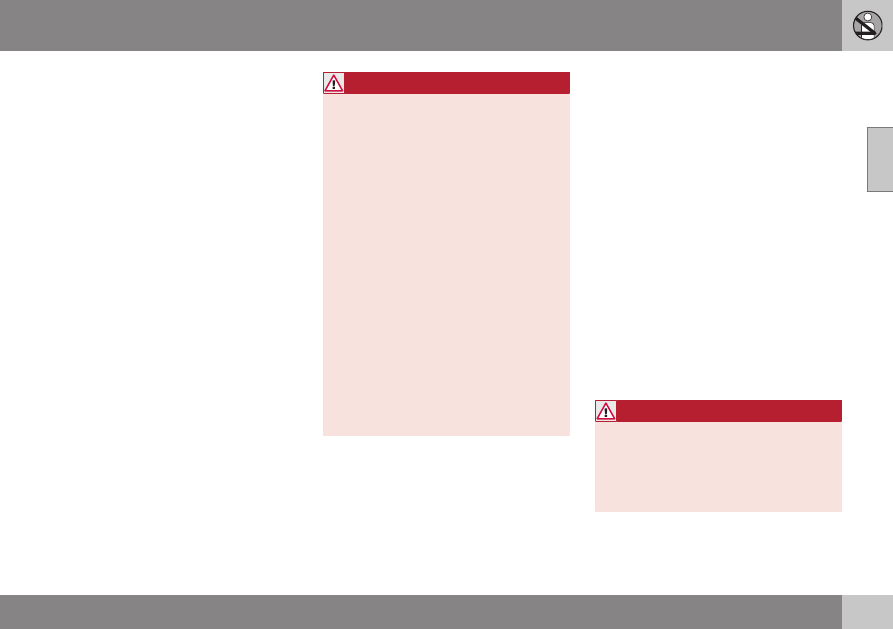Volvo S60 Inscription (2016 year). Manual - part 2

02 Safety
02
}}
33
The location of the front airbags is indicated
by SRS AIRBAG embossed on the steering
wheel pad and above the glove compartment,
and by decals on both sun visors and on the
front and far right side of the dash.
The driver's side front airbag is folded and
located in the steering wheel hub.
The passenger's side front airbag is folded
behind a panel located above the glove com-
partment.
WARNING
•
The airbags in the vehicle are designed
to be a SUPPLEMENT to–not a
replacement for–the three-point seat
belts. For maximum protection, wear
seat belts at all times. Be aware that
no system can prevent all possible
injuries that may occur in an accident.
•
Never drive with your hands on the
steering wheel pad/airbag housing.
•
The front airbags are designed to help
prevent serious injury. Deployment
occurs very quickly and with consider-
able force. During normal deployment
and depending on variables such as
seating position, one may experience
abrasions, bruises, swellings, or other
injuries as a result from deployment of
one or both of the airbags.
•
When installing any accessory equip-
ment, make sure that the front airbag
system is not damaged. Any interfer-
ence in the system could cause mal-
function.
Front airbag deployment
•
The front airbags are designed to deploy
during certain frontal or front-angular col-
lisions, impacts, or decelerations,
depending on the crash severity, angle,
speed and object impacted. The airbags
may also deploy in certain non-frontal
collisions where rapid deceleration
occurs.
•
The SRS (p. 31) sensors, which trigger
the front airbags, are designed to react to
both the impact of the collision and the
inertial forces generated by it, and to
determine if the intensity of the collision is
sufficient for the seat belt pretensioners
and/or airbags to be deployed.
However, not all frontal collisions activate the
front airbags.
•
If the collision involves a nonrigid object
(e.g., a snow drift or bush), or a rigid,
fixed object at a low speed, the front air-
bags will not necessarily deploy.
•
Front airbags do not normally deploy in a
side impact collision, in a collision from
the rear or in a rollover situation.
•
The amount of damage to the bodywork
does not reliably indicate if the airbags
should have deployed or not.
WARNING
If any of the airbags have deployed:
•
Do not attempt to drive the vehicle.
Have it towed to a qualified repair
facility.
•
If necessary seek medical attentIon.